Related Research Articles

SimCity, also known as Micropolis or SimCity Classic, is a city-building simulation video game developed by Will Wright, and released for several platforms from 1989 to 1991. SimCity features two-dimensional graphics and an overhead perspective. The game's objective is to create a city, develop residential and industrial areas, build infrastructure, and collect taxes for further city development. Importance is placed on increasing the population's standard of living, maintaining a balance between the different sectors, and monitoring the region's environmental situations to prevent the settlement from declining and going bankrupt.

William Ralph Wright is an American video game designer and co-founder of the game development company Maxis, which later became part of Electronic Arts. In April 2009, he left EA to run Stupid Fun Club Camp, an entertainment think tank in which Wright and EA are principal shareholders.

SimEarth: The Living Planet is a life simulation game, the second designed by Will Wright. and published in 1990 by Maxis. In SimEarth, the player controls the development of a planet. English scientist James Lovelock served as an advisor and his Gaia hypothesis of planet evolution was incorporated into the game. Versions were made for the Macintosh, Atari ST, Amiga, IBM PC, Super Nintendo Entertainment System, Sega CD, and TurboGrafx-16. It was re-released for the Wii Virtual Console. In 1996, several of Maxis' simulation games were re-released under the Maxis Collector Series with greater compatibility with Windows 95 and differing box art, including the addition of Classics beneath the title. SimEarth was re-released in 1997 under the Classics label.
Strategic Simulations, Inc. (SSI) was a video game developer and publisher with over 100 titles to its credit from its founding in 1979 to its dissolution in 1994. The company was especially noted for its numerous wargames, its official computer game adaptations of Dungeons & Dragons, and for the groundbreaking Panzer General series.
A government simulation or political simulation is a game that attempts to simulate the government and politics of all or part of a nation. These games may include geopolitical situations, the creation of domestic political policies, or the simulation of political campaigns. They differ from the genre of classical wargames due to their discouragement or abstraction of military or action elements.

Don Daglow is an American video game designer, programmer, and producer. He is best known for being the creator of early games from several different genres, including pioneering simulation game Utopia for Intellivision in 1981, role-playing game Dungeon in 1975, sports games including the first interactive computer baseball game Baseball in 1971, and the first graphical MMORPG, Neverwinter Nights in 1991. He founded long-standing game developer Stormfront Studios in 1988.

Earl Weaver Baseball is a baseball video game (1987) designed by Don Daglow and Eddie Dombrower and published by Electronic Arts. The artificial intelligence for the computer manager was provided by Baseball Hall of Fame member Earl Weaver, then manager of the Baltimore Orioles, based on a lengthy series of interviews. EWB was a major hit, and along with John Madden Football helped pave the way for the EA Sports brand, which launched in 1992. A Sega Genesis version was planned but cancelled.
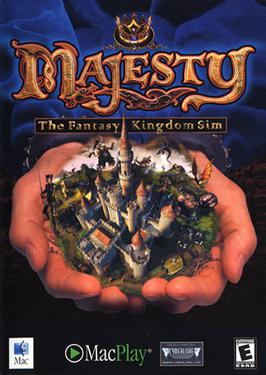
Majesty: The Fantasy Kingdom Sim is a real-time strategy video game developed by Cyberlore Studios, and published by Hasbro Interactive under the MicroProse brand name for Windows in March 2000. The game is not a simulator; that part of the title is a witticism, a reference to the game's adherence to fantasy and fantasy role-playing game cliches. In Majesty, players assume the role of king in a fantasy realm called Ardania which features city sewers infested with giant rats, landscapes dotted with ancient evil castles, and soldiers helpless against anything bigger than a goblin. As Sovereign, the player must rely on hiring bands of wandering heroes in order to get anything done. In a major divergence from most real-time strategy games, the player does not have direct control over their units.
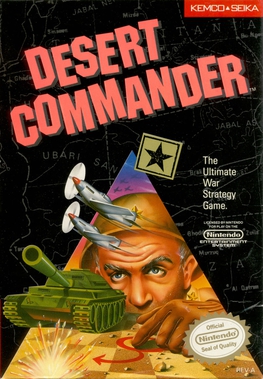
Desert Commander is a 1988 turn-based strategy video game developed and published by Kemco in Japan and North America for the Nintendo Entertainment System. It is themed after the North African theatre of World War II in the 1940s, where players take command of the Allied Forces led by George S. Patton and Bernard Montgomery to fight against the Axis Powers led by Erwin Rommel. Its gameplay consists of moving units into positions to confront enemies in turn-based encounters determined by multiple factors, replenishing units with resources in order to occupy the enemy headquarters or destroy all enemy forces. The title garnered positive reception from critics; Reviewers praised several aspects such as the presentation, visuals, controls, challenge and balance of strategy and action, though others criticized certain design choices while fan reception proved to be mixed in Japan.
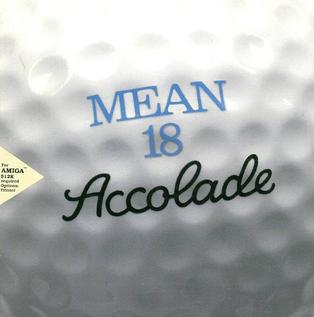
Mean 18 is a golf video game designed by Rex Bradford with graphics by George Karalias, both of Microsmiths, and released by Accolade for MS-DOS compatible operating systems in 1986. It was ported to the Amiga, Apple IIGS, Atari ST, and Macintosh. It includes an editor allowing players to create their own courses. In 1989, Atari Corporation published a port for the Atari 7800 console. An Atari 8-bit family version was in development in 1989 but was ultimately cancelled.
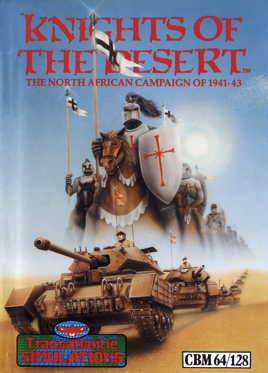
Knights of the Desert is a 1983 computer wargame developed by Tactical Design Group and published by Strategic Simulations for the Apple II, Atari 8-bit family, Commodore 64, MS-DOS, and TRS-80. It is based on the 1940-43 North African campaign.
Construction and management simulation (CMS), sometimes also called management sim or building sim, is a subgenre of simulation game in which players build, expand or manage fictional communities or projects with limited resources. Strategy video games sometimes incorporate CMS aspects into their game economy, as players must manage resources while expanding their project. Pure CMS games differ from strategy games, however, in that "the player's goal is not to defeat an enemy, but to build something within the context of an ongoing process." Games in this category are sometimes also called "management games".

Halls of Montezuma: A Battle History of the U.S. Marine Corps is a strategy video game developed by Strategic Studies Group in 1987 for the Apple II. Ports were later released for the Commodore 64, Amiga, DOS, and Apple IIGS.
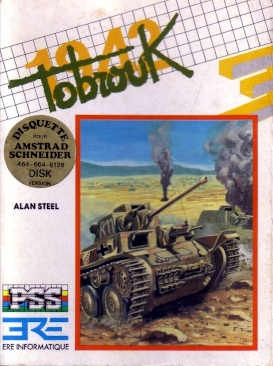
Tobruk: The Clash of Armour is a turn-based strategy video game developed by Data Design Systems and published by Personal Software Services. It was exclusively released in the United Kingdom for the Commodore 64, ZX Spectrum and Amstrad CPC in 1987. It is the eleventh instalment of the Strategic Wargames series. The game is set during the 1941 Siege of Tobruk of the Western Desert Campaign in World War II and revolves around the Allied forces attempts to overthrow German field marshal Erwin Rommel from the city.

Rommel: Battles for Tobruk is a 1985 video game published by Game Designers' Workshop.
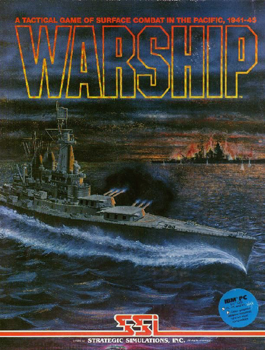
Warship is a 1986 computer wargame designed by Gary Grigsby and published by Strategic Simulations. It covers naval conflict during the Pacific War.

Space M+A+X is a 1986 video game published by Final Frontier Software.

Long Lance: A Computer Game of Tactical Naval Combat in the South Pacific is a 1987 video game published by Simulations Canada.

Desert Rats: The North Africa Campaign is a 1985 video game published by Cases Computer Simulations.

Cauldron: Battle of Gazala, May 1942 is a board wargame published by Simulations Publications Inc. (SPI) in 1976 that simulates the Battle of Gazala during World War II. The game was originally published as part of the Four Battles in North Africa "quadrigame" — a gamebox containing four games simulating four separate battles that all use the same rules. Cauldron was also published as an individual "folio game."
References
- 1 2 Wilson, Johnny L. (October 1987). "Outfoxed in the Desert: Simulations Canada's "Rommel At Gazala"". Computer Gaming World. Vol. 1, no. 40. pp. 20–21.
- ↑ "Christmas Buyers Guide". Computer Gaming World . No. 41. November 1987. p. 20.
- ↑ "Computer Play (1989-01)(Computer Play Magazine)(US)". January 1989.
- ↑ "Warning Order - Issue #16". 2006.